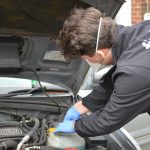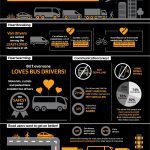UK drivers are stuck on empty and facing weeks of delays at the pumps due to the current driver shortage.
With weeks of empty forecourts and fuel scarcity to come, drivers are facing a tough Autumn ahead.
To help keep Britain moving, TTC Group, a leading provider of driver training programs, has shared eight top tips to increase fuel economy for all drivers, known as ‘hypermiling’ which will help to space out the trips to the pumps.
1. Is the trip really necessary?
An obvious point, but the easiest way to save fuel is not to use your car for unnecessary trips. Is that meeting necessary face-to-face, or can it happen online? Can you walk instead? If you have to get there by car or you are a commercial driver, the TTC Continuum My Transport app can help you plan the most efficient route for your journey.
2. Group small trips together
Avoid very short trips. If you have multiple stops, then plan them to do all as part of the same trip. Fuel economy is enhanced once the engine is warmed up, so a longer “chain” of errands will result in better fuel economy than multiple short ones, particularly in cold weather.
3. Check your tyres
Under-inflated tyres are not just dangerous for drivers, but they also have a major effect on fuel economy. Many UK drivers admit to never checking their tyres unless they are visibly flat, so instead, get hypermiling and relax, knowing that your tyres are safe for all conditions by checking their pressures. Find the right pressures for your car in the driver’s handbook or check online.
4. Leave the roof rack at home
After a summer holiday, it’s tempting to leave the roof rack or a roof-box mounting bars in place, but the extra wind resistance caused by unused roof boxes, roof racks or just the bars mean greater fuel use. To avoid using more fuel than normal for no benefit, leave the roof clutter at home.
5. Eco Mode
If your car has different driver modes, it might not default to “eco mode” on start-up. If you are unfamiliar with the driver settings on your car, it is worth reading the owner’s manual to see if your car has this feature and using it correctly. Altered gearbox, throttle and even climate control settings can make up to 15% difference in some cases, so why not allow your car to help save fuel for you? At the same time, by using the TTC online driver risk management platform, you can be supported in becoming a more eco-friendly driver via the intuitive coaching app.
6. Ditch the clutter
Many of us are guilty of letting items accumulate in the boots of our cars, but any added weight means increased fuel consumption. Clear out the boot, put the golf clubs in the shed and empty any storage pockets of unwanted clutter – not only will you have a clear boot, but you will also gain precious extra miles to a tank.
7. Don’t idle away your fuel
If your vehicle does not have a stop-start function when you are stationary, then turning your engine off in traffic queues and at red lights will save a surprising amount of fuel which is otherwise wasted by an idling engine. A top tip from a driving pro is to avoid drive-through food and coffee stops, as these usually involve a lot of idling time for your engine.
8. Read the Road.
Reading the road ahead can help you drive smoothly and save fuel by getting up to speed efficiently, shifting into higher gears as early as possible and leaving yourself space to avoid having to brake too often. On motorways, cruise control helps keep your car efficient, and for maximum fuel savings, slow down! Dropping your cruising speed from 70mph to 65mph or even 60mph, can have add as much as 14% to your economy. For the ultimate gains in mileage, try the TTC Continuum mobile app which can help you drive smoothly, alerting you if your driving becomes harsher than it needs to be.





















